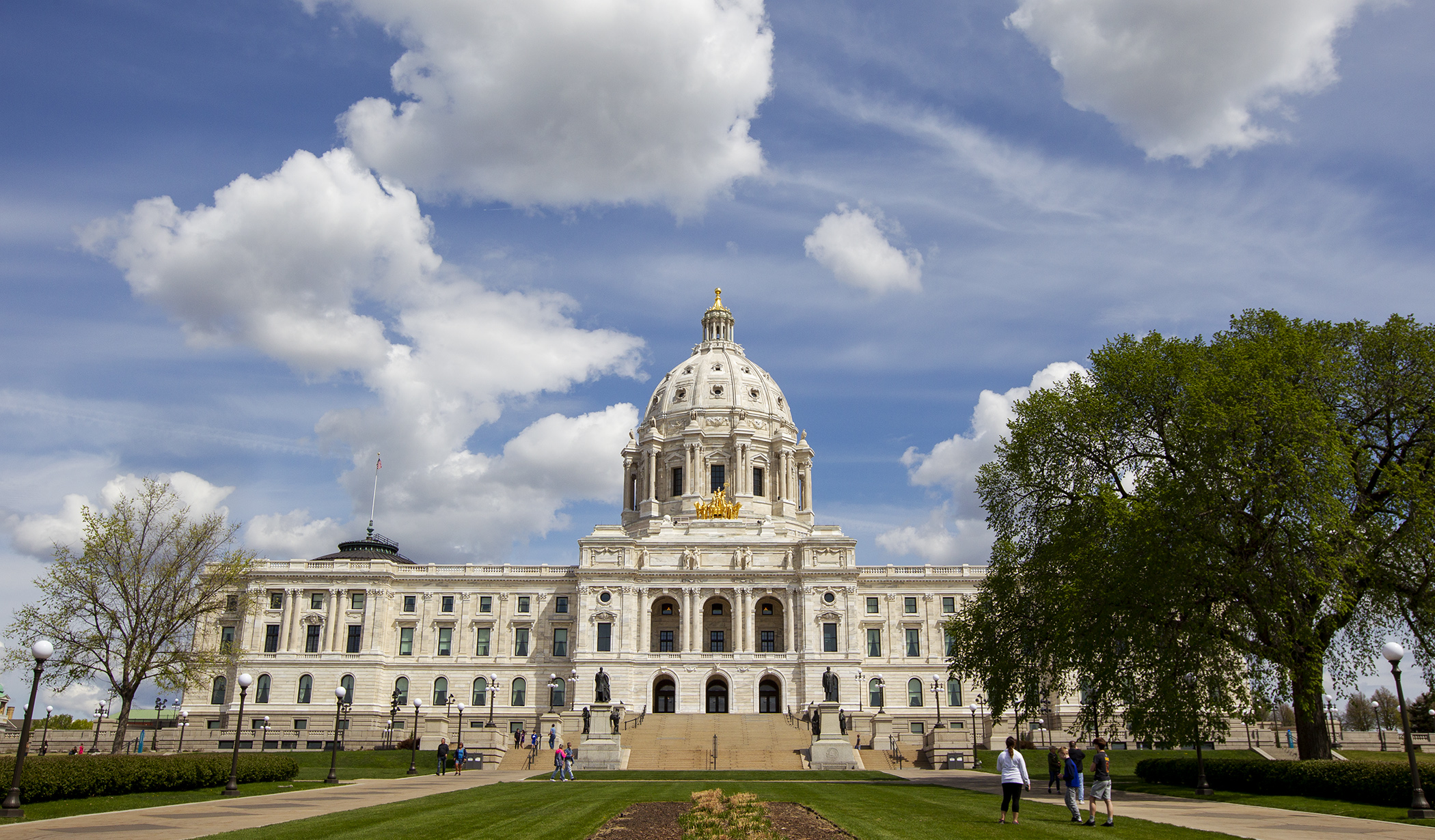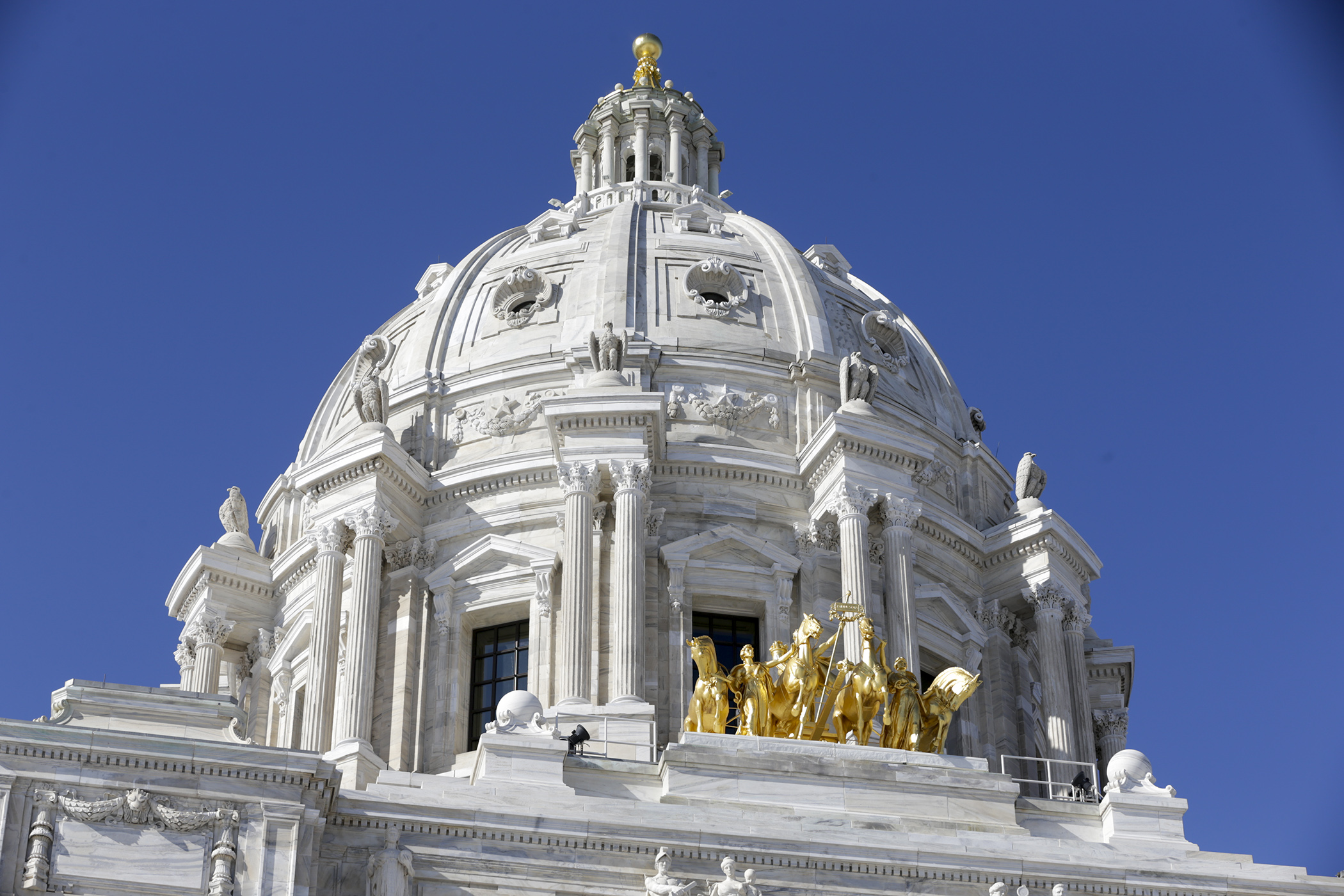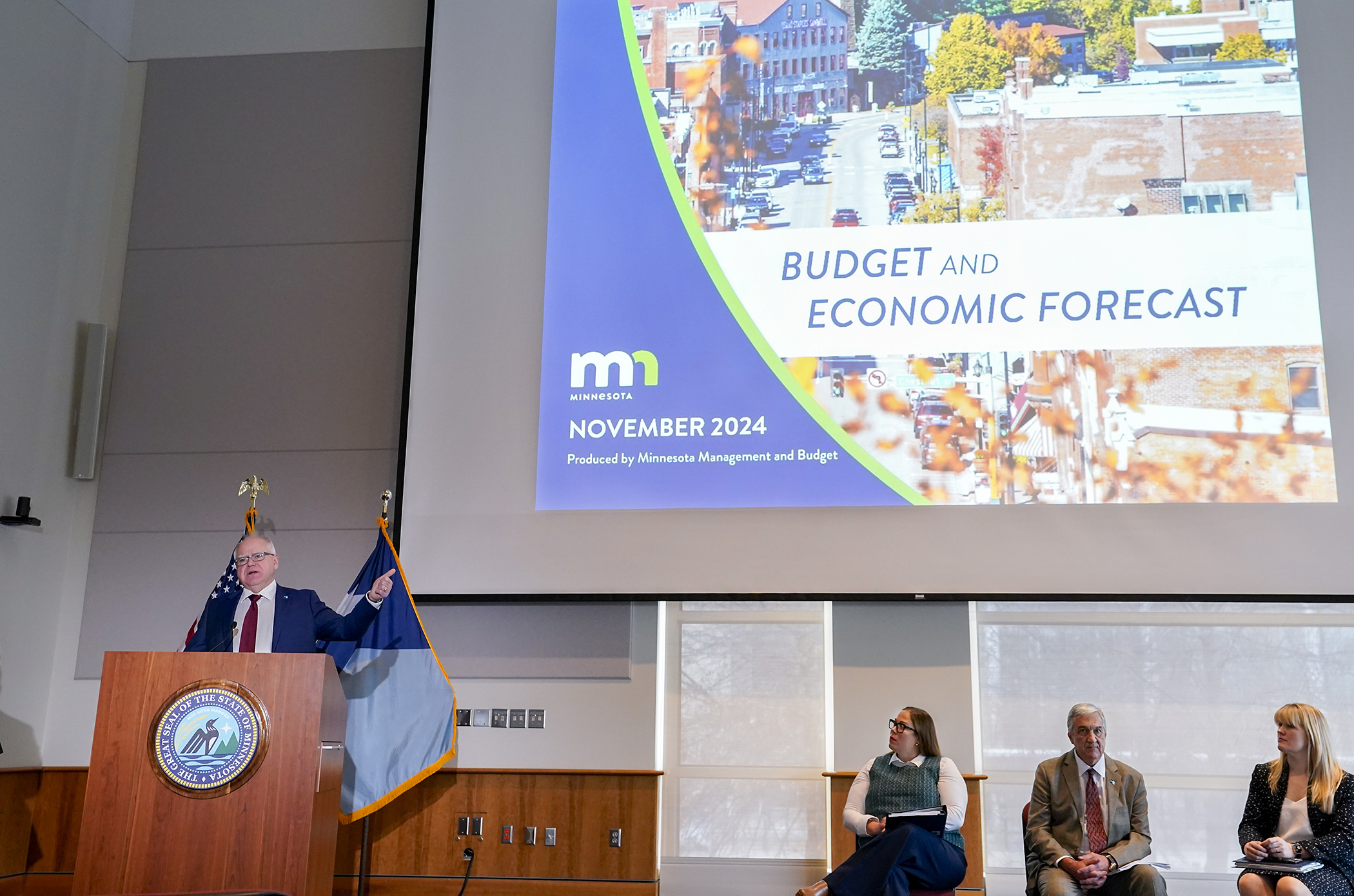$2 billion bonding bill headed for House Floor vote

Near the top of most everyone’s to-do list when the 2020 legislative session began was passing a bonding bill that would fund hundreds of capital projects around the state and create thousands of jobs.
More than 200 bills were heard this session by the House Capital Investment Division, and members had nearly finished their work when the full brunt of the COVID-19 pandemic hit in mid-March, casting doubt on the bonding bill’s prospects for passage.
But the division concluded its work Tuesday when the House Ways and Means Committee approved its bonding report 17-10 along party lines, even as uncertainty surrounding its fate continues.
The bill’s next stop is the House Floor. At morning media availability, House Speaker Melissa Hortman (DFL-Brooklyn Park) said action is likely on Saturday.
Sponsored by Rep. Mary Murphy (DFL-Hermantown), HF2529 – as changed by a delete-all amendment – would appropriate nearly $2.03 billion in general obligation bonds, and $495.9 million in additional appropriations, for a total of $2.52 billion.
That money would pay for work on several hundred projects around Minnesota, ranging from water infrastructure to road and bridge repair to deferred building maintenance. Murphy said the bill was a culmination of two years of hard work with her division holding 43 hearings and spending 17 days traveling for site visits to put the bill together.
“It’s a bill that addresses the basic infrastructure of our state,” Murphy said. “Whether it’s clean water or repairing roads and bridges … [Gov. Tim Walz] has talked all biennium about bringing Minnesota together and this really, truly does that.”
Murphy added that although there was no amount of money realistically available that would address the state’s need for asset preservation and deferred maintenance work, the bill would be a good start.
But several Republicans raised concerns about HF2529 and echoed a position voiced May 2 by House Minority Leader Kurt Daudt (R-Crown) that his party would focus on passing a bonding bill only after Gov. Tim Walz ceased using the emergency powers he is granted in response to the pandemic.
Daudt reiterated that position Tuesday morning, releasing a short statement that said: "Once the governor's emergency powers conclude on Wednesday, we look forward to working together on our state's response to COVID-19 and a bonding bill heavily focused on infrastructure."
Because the bulk of the appropriations in HF2529 come from general obligation bonds, which require approval by a three-fifths majority (81 votes) in the House and Senate to be used for capital projects, the bill cannot pass without votes from House Republicans. The DFL currently holds a 75-59 seat advantage in the body.
Rep. Pat Garofalo (R-Farmington) said the bill ignores the reality that the governor is using emergency powers in an arbitrary fashion, deciding that some businesses can open while others can’t, and the DFL has been unwilling to acknowledge the problem.
[MORE: Full list of the appropriations and projects]
“Minnesotans are getting unnecessarily and economically harmed,” he said. “That’s why the House Republicans have made very clear that before we take care of government spending for capital investment, we need to reopen and provide structure for those private sector businesses.”
Garofalo went on to say the bill was written for the “pre-COVID-19 world” and places too much focus on new construction rather than rehabilitation and asset preservation, adding that it would also increase the state’s budget deficit at a time of diminished tax revenues and economic uncertainty.
Murphy responded by saying the bill addresses emergencies across the state in public safety, clean water and natural resources management.
“This a bill that will benefit our kids and the next generation,” Murphy said. “It is a bill for today and for tomorrow.”
These are the 10 largest funding areas in the bill:
Transportation
Improvements to the state’s transportation system would receive the largest appropriation, with nearly $453 million directed to a host of projects throughout the state. Local road improvement projects and local bridge improvement projects would each receive $53.2 million.
Specific projects that would receive large appropriations include $55 million to replace the Third Street/Kellogg Blvd. bridge in St. Paul and $52 million for rail grade separation improvements in Moorhead.
Higher education
Officials from the University of Minnesota and the Minnesota State system have repeatedly testified about the billions of dollars they need to catch up on the maintenance projects at their facilities that have been deferred due to funding shortfalls. The bill would take a step toward addressing that backlog by appropriating $425 million.
The Minnesota State system would receive $263.7 million, with $142.5 million designated to the general category of “Higher Education Asset Preservation and Replacement projects,” and the rest directed to more than a dozen specific projects. The University of Minnesota would receive $161.9 million, with $125 million for HEAPR and most of the remaining money, $29.2 million, to replace a building for the Institute of Child Development on the Minneapolis campus.
Water infrastructure
Some of the state’s aging wastewater treatment facilities and systems would receive a boost as the Public Facilities Authority, which provides financing and technical assistance to communities, would receive $327.2 million. Nearly 30 cities and townships would receive grants, including Austin – $19 million for improvements to its wastewater facility; Bemidji – $12.3 million for its wastewater treatment plant; and Silver Creek Township - $12 million for wastewater improvements.
DEED grants
The Department of Employment and Economic Development would receive $203.4 million for dozens of grants that would go to local units of government and nonprofits for projects that range from an outdoor performance venue in Minneapolis ($20 million) to an amphitheater in New Ulm ($300,000).
Department of Natural Resources
Asset preservation ($65 million) is the single largest appropriation for the DNR, which would receive $201.6 million. Another $20 million would go to flood hazard mitigation grants, the same amount that would be allocated to dam safety repair, reconstruction or removal projects. Several cities would also receive grants, including $11.4 million for riverbank restoration in Mankato.
Met Council
The Metropolitan Council would receive $128.4 million, with $55 million going to its Busway Capital Improvement Program, $10 million for regional parks and trails, and the bulk of the remaining money devoted to grants for cities and counties in the metro area.
DHS
The two biggest expenditures in the $75.8 million for the Department of Human Services are $15 million for asset preservation and $18.3 million to design, renovate, furnish and equip the next phase of improvements for the state’s sex offender program at the St. Peter Regional Treatment Center.
Corrections
Almost half of the $66.3 million appropriation the Department of Corrections would be targeted for asset preservation, while the department’s bus garage and a building renovation at the Faribault facility would each also receive more than $7 million.
Public safety
A new state emergency operations center, at a cost of $29.5 million, would account for more than half of the $54.8 million appropriation for the Department of Public Safety, followed by $10.4 million for the city of Virginia to build a regional training facility for fire, police and emergency services personnel.
PCA
The Pollution Control Agency would receive $53.6 million in general obligation bonds. But it would also receive $22.9 million in appropriation bonds, which will go to help clean Superfund sites in Esko, Duluth, Perham and Minneapolis.
Major appropriations in the bill include:
- $452.9 million – Department of Transportation
- $327.2 million – Public Facilities Authority
- $263.7 million – Minnesota State
- $203.4 million – Department of Employment and Economic Development
- $201.6 million – Department of Natural Resources
- $161.9 million – University of Minnesota
- $128.4 million – Metropolitan Council
- $75.8 million – Department of Human Services
- $66.3 million – Department of Corrections
- $54.8 million – Department of Public Safety
- $53.6 million – Pollution Control Agency
- $48 million – Housing Finance Authority
- $44.9 million – Board of Water and Soil Resources
- $40 million – Rural Finance Authority
- $25.1 million – Department of Administration
- $25 million – Minnesota Zoo
- $21.9 million – Department of Military Affairs
- $17.7 million – Minnesota State Academies
- $14.6 million – Department of Veterans Affairs
- $8.4 million – Amateur Sports Commission
- $5.3 million – Historical Society
- $3.1 million – Perpich Center for Arts Education
- $3.01 million – Department of Education
Related Articles
Search Session Daily
Advanced Search OptionsPriority Dailies
Ways and Means Committee OKs House budget resolution
By Mike Cook Total net General Fund expenditures in the 2026-27 biennium will not exceed a hair less than $66.62 billion.
That is the budget resolution approved Tuesday by the House Ways...
Total net General Fund expenditures in the 2026-27 biennium will not exceed a hair less than $66.62 billion.
That is the budget resolution approved Tuesday by the House Ways...
Minnesota's budget outlook worsens in both near, long term
By Rob Hubbard It looks as if those calling for less state spending could get their wish, judging from Thursday’s release of the February 2025 Budget and Economic Forecast.
A state su...
It looks as if those calling for less state spending could get their wish, judging from Thursday’s release of the February 2025 Budget and Economic Forecast.
A state su...